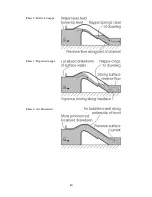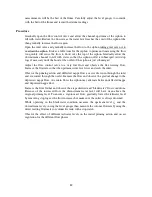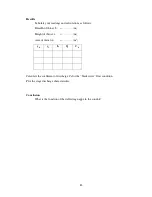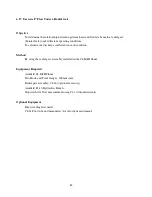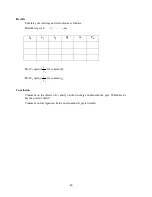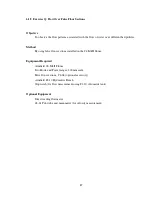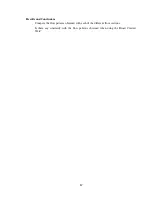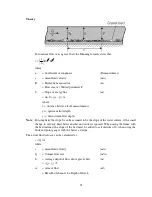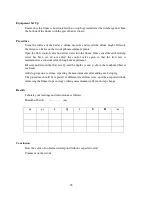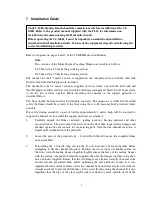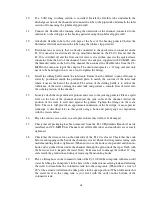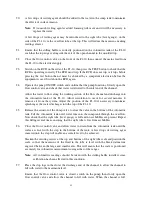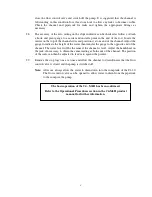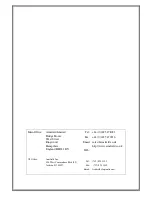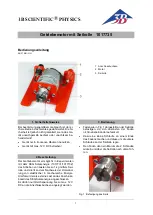
ii
instrument carrier. When the joint is tight carefully remove any excess sealant from the
inside of the channel to provide a smooth transition between the sections.
4.
Place the spacers provided at equidistant points along the top of the clear acrylic sides.
Two spacers are supplied with the 2.5m version, four spacers are supplied with the 5.0m
version.
5.
Carefully lift the channel section onto the temporary trestles in the required position.
6.
Position the bearing pedestal (incorporating the flowmeter if supplied) adjacent to the
locating holes in the channel support towards the downstream end (outlet) of the channel
section. Apply a smear of grease to the pivot pin then lift the channel into position on the
pedestal. Slide the pivot pin into position then retain the pivot pin using a split pin at each
end. Ensure that the flume can pivot freely at this end.
7.
Position the jacking pedestal (incorporating the jacking handwheel) adjacent to the
locating holes in the channel support at the upstream (inlet) end of the channel section.
Adjust the height of the actuator to suit and apply a smear of grease to the pivot pin, then
lift the channel into position on the pedestal. Slide the pivot pin into position then retain
the pivot pin using a split pin at each end. The temporary trestles can now be removed.
8.
Position the F1-10 at the downstream end of the channel (adjacent to the pivot pedestal)
with the end of the flow channel above the moulded channel on the top of the F1-10 as
shown in the diagram below:
When correctly positioned, the end of the flow channel should be just inside the moulded
channel (not above the volumetric tank) and aligned with the centre line of the moulded
channel.
9.
When the position of the C4-MkII and F1-10 have been confirmed the two pedestals of
the C4-MkII should be bolted to the floor using the 8 masonry bolts supplied (4 bolts on
each pedestal). When bolted to the floor it is unlikely that the flume will fall over even if
accidentally subjected to a severe side impact.

